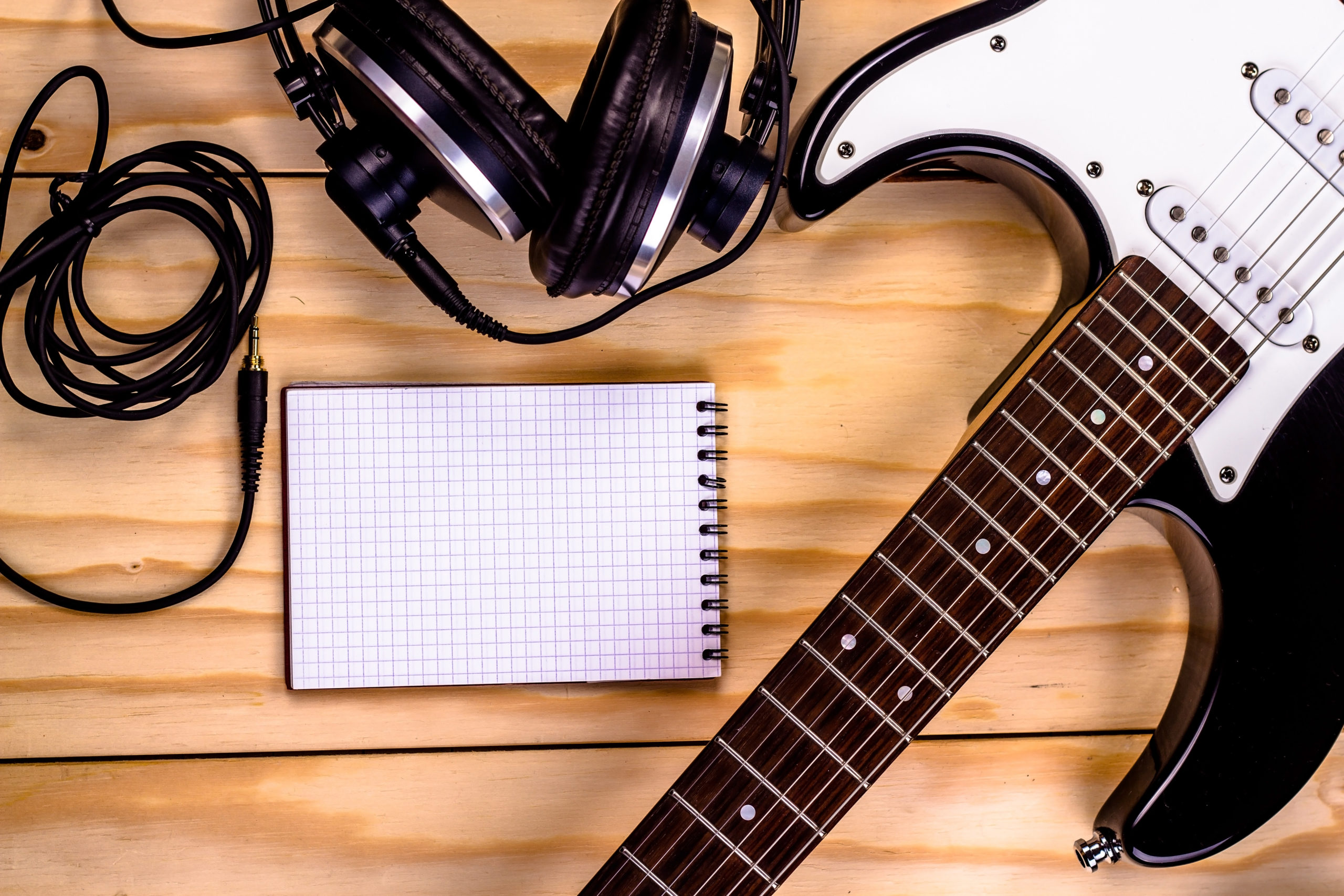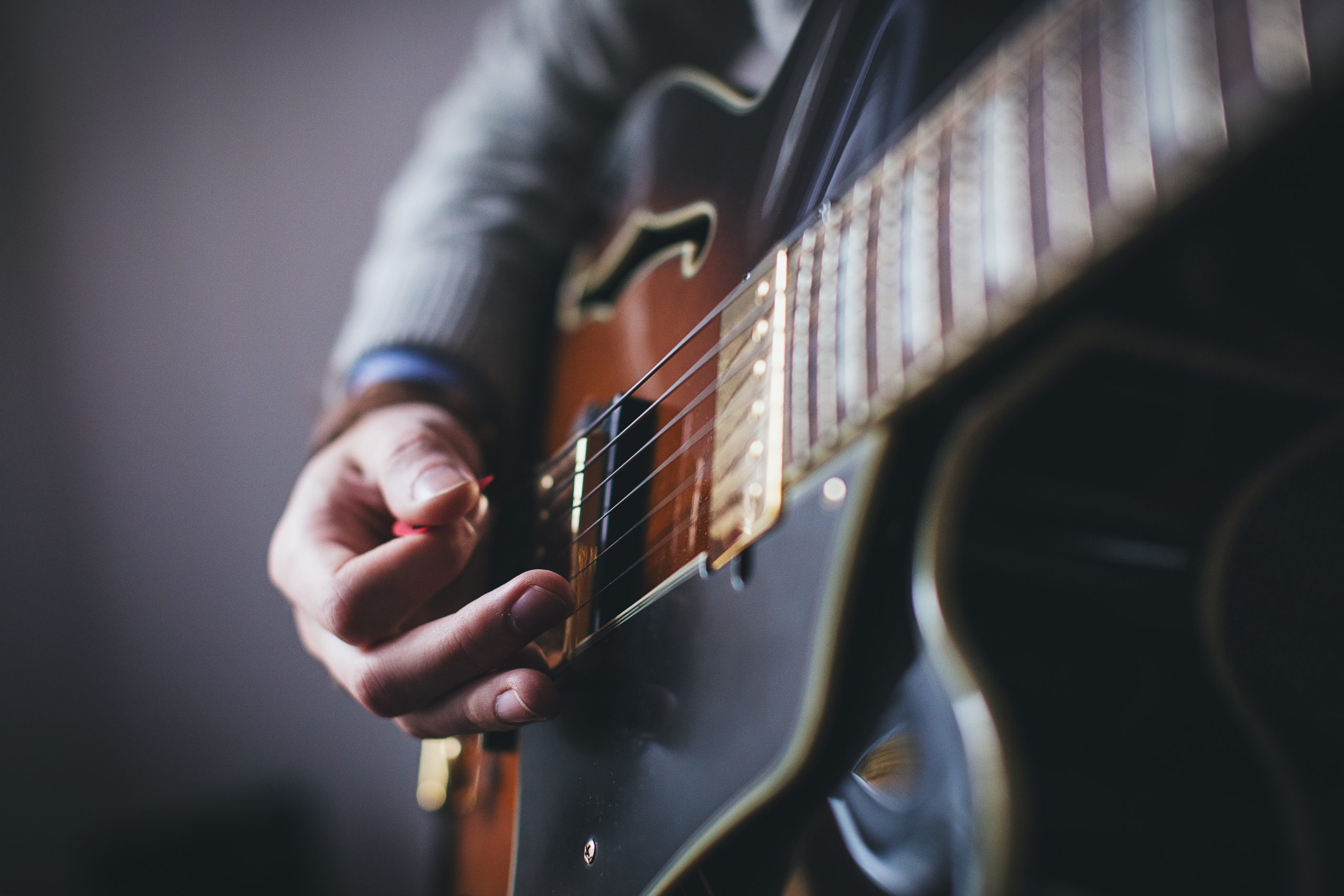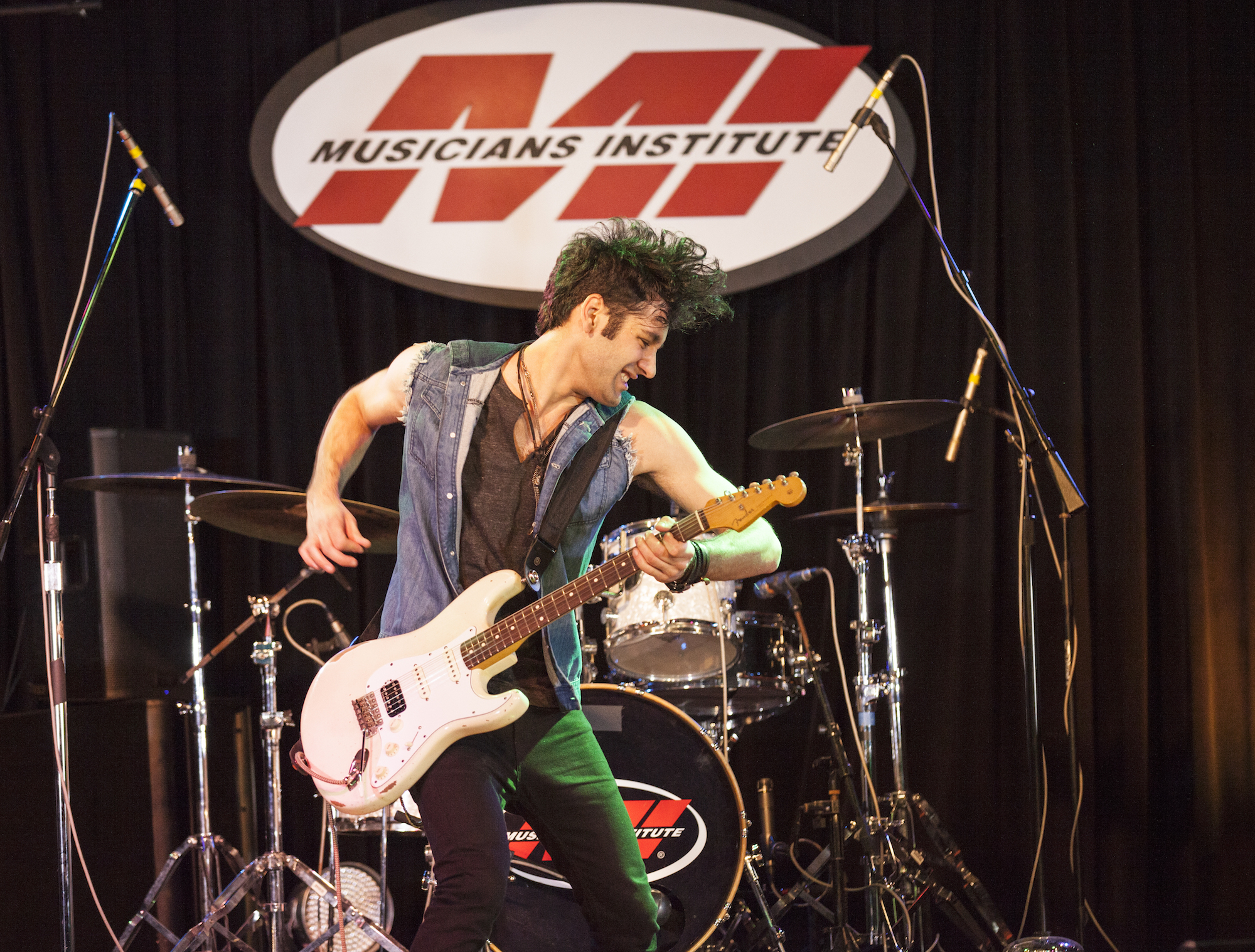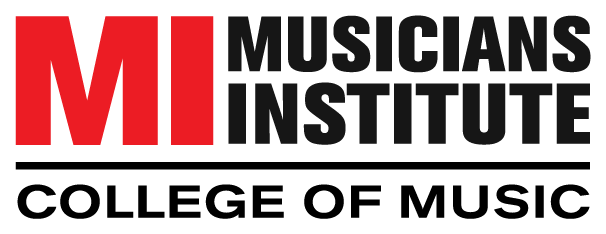For this blog, MI Guitar instructor, Lenny Widegren, highlights five essential tips to create a daily guitar practice routine. At MI, Lenny teaches Alternative Guitar Heroes, Hard Rock LPW, Single String Improvisation, Rhythm Guitar, RSW, Open Counseling, and Private Lessons.
When trying to figure out a daily guitar practice routine, it’s paramount to plan ahead and have structure. We all know that randomly starting to noodle around is fun, and can lead to great ideas for licks and songs, but when creating a daily routine it’s imperative to have a plan so that you can focus on specific skills you want to improve.
1. Plan, Execute, Repeat

When you practice scales, you can use a device like the circle of fifths to create structure, while also maximizing the number of keys you are getting familiar with on the fretboard. Take the Major scale and one pattern a day, using the circle of fifths as a template.

Blog Post
"*" indicates required fields
By submitting this form, I authorize Musicians Institute (MI) to make or allow the placement of calls, emails, and texts to me at the phone number that I have provided, including through the use of automated technology, or a prerecorded or artificial voice. I understand that I am not required to provide my phone number as a condition of purchasing any property, goods, or services. I agree to the terms of MI’s Privacy Policy. MI will not sell or rent your information to third parties, and you may unsubscribe at any time.
An example would be the first key, which is C (no sharps or flats) and find the pattern you want to start with (for CAGED system pattern 1, which is the C shape) and use a few basic rhythms running through the pattern. You can use 8th notes, then 8th note triplets, then 16th notes. If you want to get more out of a basic scale routine, add sequencing to the mix, like groups of four, leaps of thirds (sometimes called diatonic thirds) and groups of three. You can play these with any desired rhythm, but keep in mind that slower tempos are great because they force you to focus more on the upcoming sequence of notes. Do only that specific pattern for the day, and don’t spend too long on it, instead opting to really focus for a short time on the specific subject or pattern.
The next day, use the key G, the next day the key of D, and so on. After you are done with the sharp keys, use the cycle of fourths to practice the flat keys. Again, maybe you know all the CAGED patterns already? This method can still be applied. Just do all five patterns in one key every day, then add the natural minor, as well a major and minor pentatonic scales, into the mix. As you progress, add the modes and other scales like a harmonic minor, as well as arpeggios. Now you have a super-charged “one key a day” structure!
2. Set a timer
It is very easy to either focus on one subject for too long or “zone out” and focus on TOO many things when you sit down for a serious practice session. Using a timer can be very effective in making sure this doesn’t happen. Set your daily short term goals for whatever subjects you are working on and stick to a time limit.
A sample schedule can look like: 60 min for scales, chords, picking etc., 30 minutes of reading, 30 min of ear training, 60 minutes of transcribing (learning licks or solos etc.) and 60 minutes of repertoire (we’ll get back to that) in one session.
That’s already four hours. Take 5 min breaks if you find your mind is drifting, and take at least a 15 minute break after two hours. Get up, stretch etc. so you avoid losing focus.
3. Combine Different Exercises.

Another way to maximize your guitar practice time is to combine different exercises into one. This is a great way of making your time much more efficient! Here are a few examples:
- Let’s say you are working on the harmonized scale, using closed voiced triads.
To practice, run the triads up and down the neck in any given key, with no particular rhythm, which is what most players do when learning new things on the instrument. Now, what if you took some “rhythm reading” examples and added those while running the triads up and down the neck? You have just combined triad practice with some music reading practice.
- Next, you can combine any exercises with different fingerstyles.
Take a variety of patterns and use those when working on the triads and you are now working on two things at the same time, while keeping the “boring” triad practice more exciting. How about you try hybrid picking? Sure! Do the same and add “banjo rolls” to the triads in different rhythms for example, and you are working on more techniques combined into one. Be mindful of adding too many different techniques in each session, instead focusing on a few each day.
There are numerous ways to do this, so have some fun coming up with your own variations.
4. Expand Your Repertoire
One of the most important things we can do as musicians is to learn songs. Building your repertoire, with covers and original music, is invaluable. There are many different things you add to your skills by learning new songs like new techniques, (like using a thumb pick, tapping rhythm parts, or using a slide) and new sounds if you are learning different styles. It also keeps practicing fun, since these are skills that apply to performing or recording. Learn as many different styles as you can, and figure out the unique traits that make those styles work.
Make sure to not only learn the parts but also analyze what is happening in the music. Use your ear training to identify certain common chord progressions. Use your music theory knowledge to analyze how those chord progressions work, and how the chords move. This will make you a better player and a better musician, as you get a deeper understanding of what you are actually playing.
5. Practice For All Kinds Of Situations

Have you ever sat down (literally) to learn a song but when you stand up with your instrument, it suddenly feels very different to play the parts? This happens when we are so accustomed to sitting down while we practice and learn techniques and repertoire. It’s common to learn something technically challenging while sitting down, and then having trouble executing the same part while standing. In my experience, it’s a good idea to learn the song sitting, and then practice it standing as well.
Also, make sure to consider the situation and style that the song will be performed in. In the studio, you will most likely sit. But perhaps you want to stand to get that “live feel” in the way you play, then you will likely stand up to play. Maybe you will play in a jazz trio, where you could sit or stand. What if it’s a rock band? You will be standing, and the audience will probably expect some movement, so make sure to take that into account as well. It’s a great idea to practice all the important aspects of a performance such as using different effect pedals, switching sounds or pickups, moving to the front of the stage for a solo, etc., so make sure to think about these things when you practice.
Above all, make sure to make each practice session fun, and if it gets stale or boring, change things up. Happy practicing and remember, always have fun!
If you are interested in learning more about MI’s legendary Guitar program, visit the Guitar page here.

